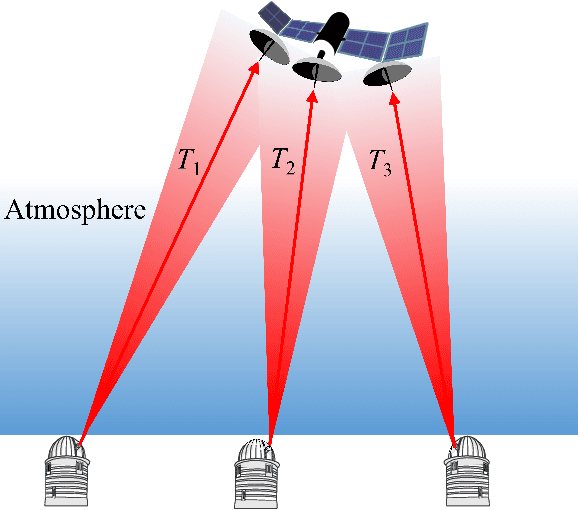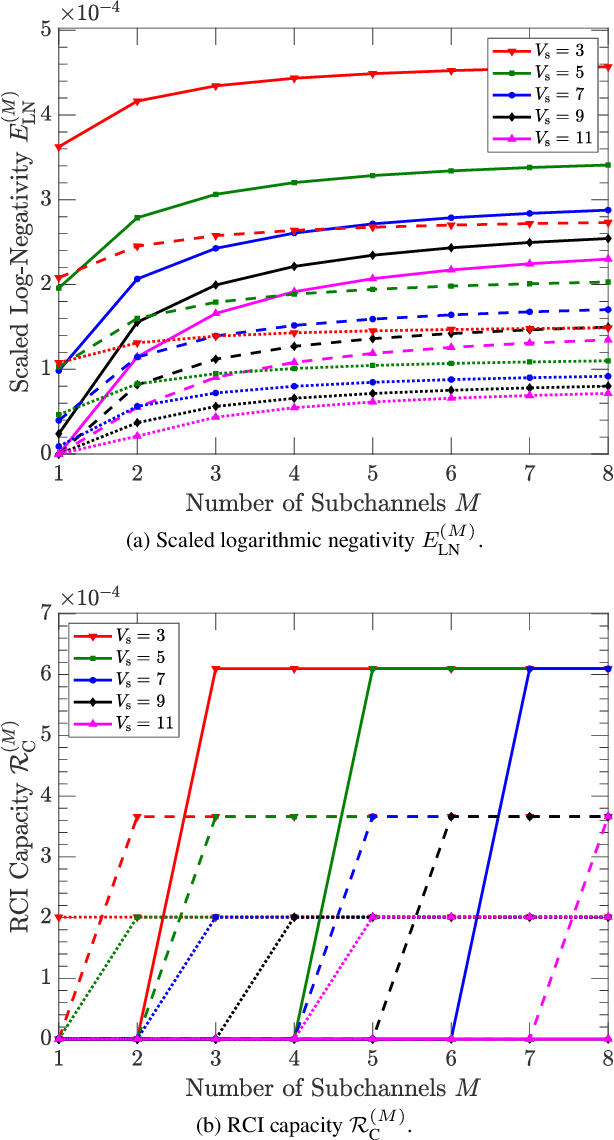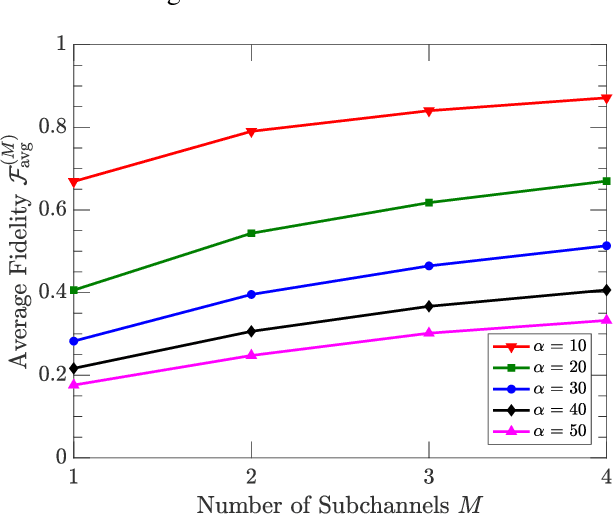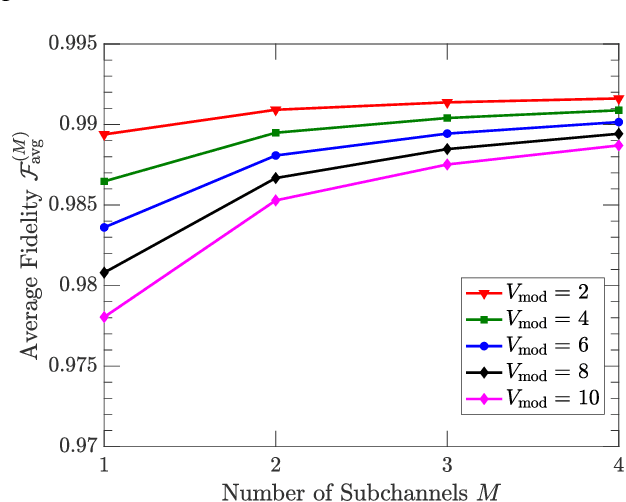Ryan Aguinaldo
Exploiting Spatial Diversity in Earth-to-Satellite Quantum-Classical Communications
Jul 02, 2024



Abstract:Despite being an integral part of the vision of quantum Internet, Earth-to-satellite (uplink) quantum communications have been considered more challenging than their satellite-to-Earth (downlink) counterparts due to the severe channel-loss fluctuations (fading) induced by atmospheric turbulence. The question of how to address the negative impact of fading on Earth-to-satellite quantum communications remains largely an open issue. In this work, we explore the feasibility of exploiting spatial diversity as a means of fading mitigation in Earth-to-satellite Continuous-Variable (CV) quantum-classical optical communications. We demonstrate, via both our theoretical analyses of quantum-state evolution and our detailed numerical simulations of uplink optical channels, that the use of spatial diversity can improve the effectiveness of entanglement distribution through the use of multiple transmitting ground stations and a single satellite with multiple receiving apertures. We further show that the transfer of both large (classically-encoded) and small (quantum-modulated) coherent states can benefit from the use of diversity over fading channels. Our work represents the first quantitative investigation into the use of spatial diversity for satellite-based quantum communications in the uplink direction, showing under what circumstances this fading-mitigation paradigm, which has been widely adopted in classical communications, can be helpful within the context of Earth-to-satellite CV quantum communications.
 Add to Chrome
Add to Chrome Add to Firefox
Add to Firefox Add to Edge
Add to Edge